Greenhouse Gases and Global Warming
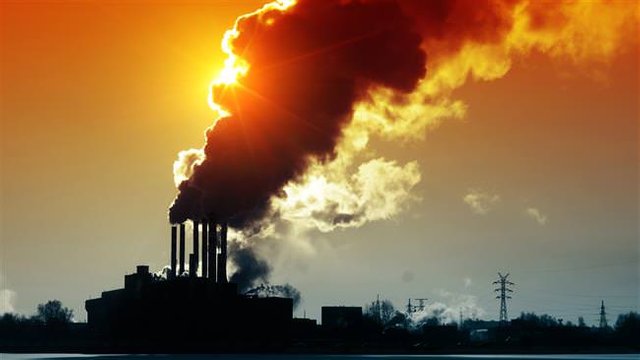
For the past 12,000 years, the Earth’s climate has been relatively stable and this stability has been crucial for the development of our modern civilization and life as we know it. As time goes by, we have grown accustomed to this stable climate. But today, as we are experiencing changes, we also have to learn to adapt. Unfortunately, due to the rapid changes, it is becoming harder for us and other living things on Planet Earth to catch up.
What is Climate Change?
Climate change is one of the most complex issues our world is facing today and it is a global problem that involves many dimensions like science, economics, society, politics and moral and ethical questions, that will be around for decades and centuries to come.
What is Happening now: Global Warming
The Earth's climate is supposed to be naturally changing. However, due to anthropogenic activities and other causes, our planet experiences rapid warming trend proceeding at a rate that is unprecedented over decades to millennia. Driven by industrialization and the increased emission of carbon dioxide and other greenhouse gases into the atmosphere, our planet's average surface temperature has risen to about 1.1 degrees Celsius since the late 19th century.
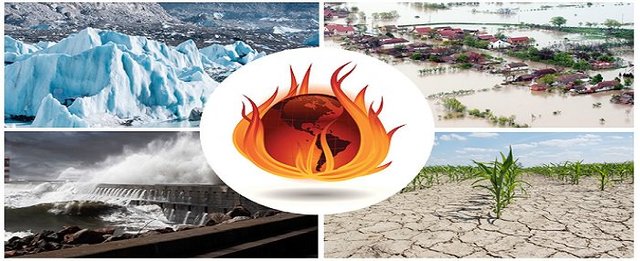
The Adverse Effects
Naturally, water molecules absorb energy, this makes the oceans susceptible to warming, with about 2,300 feet of ocean showing warming of 0.302 degrees Fahrenheit since 1969.
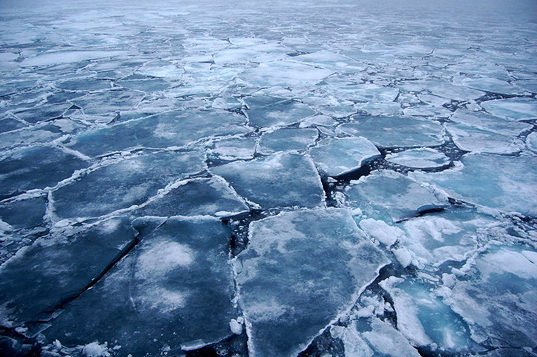
Based on the data shown by the NASA's Gravity Recovery and Climate Experiment:
Greenland lost 150 to 250 cubic kilometers of ice per year between 2002 and 2006, while Antarctica lost about 152 cubic kilometers of ice between 2002 and 2005. And over the last several decades, both the thickness and extent of Arctic sea ice has declined rapidly. Even the further observations using satellites also reveal that the amount of spring snow cover in the Northern Hemisphere has decreased over the past five decades and that the snow is melting earlier.
Thus, resulting in the rise of global sea level for about 8 inches in the last century.
According to the Third National Climate Assessment Report:
The Global Climate Change could potentially contribute to more frequent wildfires, longer periods of drought and an increase in the number, duration, and intensity of tropical storms.
Some of the long-term effects of global climate change include a continuous rise in temperatures, an increase of a month or more in the lengths of the frost-free and growing seasons, increased heavy precipitation events, more droughts and heat waves. Hurricane-associated storm intensity and rainfall rates are projected to increase as the climate continues to warm.
The Greenhouse Gases
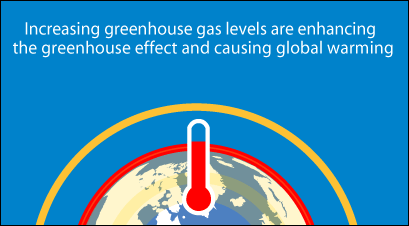
Greenhouse gases in the atmosphere block heat from escaping to Earth. We depend on the energy coming from the sun for the proliferation of life and about half of the energy reaching the Earth's atmosphere passes through the air and clouds to the surface, the energy is then absorbed and radiated upward in the form of infrared heat. The greenhouse gases absorb about 90 percent of this heat and radiates back toward the surface, which regulates the temperature to a life-supporting average of 59 degrees Fahrenheit or 15 degrees Celsius.
However, human activities are changing the natural greenhouse.
Most climate scientists agree that the main cause of the current global warming trend is the human expansion of the "greenhouse effect" — warming that results when the atmosphere traps the heat radiating from Earth towards space.
Carbon dioxide, a greenhouse gas, is not particularly harmful to us, but when released into the atmosphere at a certain amount, it will contribute to the warming of our planet because of its heat-trapping nature.
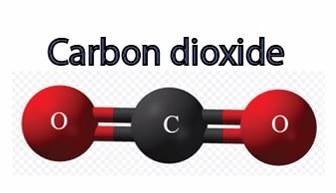
The ability of carbon dioxide and other greenhouse gases (methane, nitrous oxide, etc.) affects the transfer of infrared energy through the atmosphere is the scientific basis of many instruments flown by NASA. There is no question that the increased levels of greenhouse gases must cause the Earth to warm as a response.
Our modern civilization and economy depend on the industrial activities that have raised atmospheric carbon dioxide levels from 280 parts per million to 400 parts per million in the last 150 years.
Other Greenhouse gases
- Methane is the second-biggest contributing greenhouse gas, responsible for 20 percent of human-induced global warming. It is 23 times more powerful than carbon dioxide and has an atmospheric lifetime of roughly 12 years.
- Nitrous oxide is 296 times more powerful a greenhouse gas than carbon dioxide and remains in the atmosphere for 114 years.
- Fluorinated gases make up only a small portion of greenhouse gas emissions, but they are extremely potent. The most common F-gases are hydrofluorocarbons (HFCs). Depending on the exact type of F-gas, they are up to 20,000 times more powerful than carbon dioxide and have atmospheric lifetimes of up to 260 years.
- Perfluorocarbons (PFCs) are 5,700 to 10,000 times more powerful greenhouse gases than carbon dioxide and have an atmospheric lifetime of up to 50,000 years.
- Sulphur hexafluoride is the most potent greenhouse gas evaluated by the Intergovernmental Panel on Climate Change as 23,900 times more powerful than carbon dioxide and has an atmospheric lifetime of 3,200 years.
Mitigating Measures
"Mitigation of Climate Change from the United Nations Intergovernmental Panel on Climate Change:"
Mitigating measures include the reduction of the emission of heat-trapping greenhouse gases into the atmosphere. Every single one of us can help by reducing our energy consumption. The less electricity we use, the fewer power plants will burn coal and emit carbon dioxide. Mitigation is done so that we can stabilize greenhouse gas levels to allow ecosystems to adapt naturally to climate change and ensure economic development to proceed the life on Earth in a sustainable manner.
It's our role as guardians and protectors to help in creating and developing a sustainable Planet Earth for the future generations to come.
I HOPE YOU ENJOYED READING. THANK YOU FOR STOPPING BY!
References:
https://climate.nasa.gov/solutions/adaptation-mitigation/
https://www.unenvironment.org/explore-topics/climate-change/what-we-do/mitigation
https://climate.nasa.gov/evidence/
https://climate.nasa.gov/effects/
https://climate.nasa.gov/causes/
http://www.greenpeace.org/eastasia/campaigns/climate-energy/science/other-greenhouse-gases/

if people would continue to neglect taking care of Mother Nature, wala nang aabutan pa ang mga future generations :(
Saddest ending :(
How is Pinas doing its' bit and Pinoys?
Philippines is now a developing country yet we emit less carbon dioxide and other greenhouse gases than of the first world countries. But still, we need to do our part in taking care of our only home. The train law is a yes for me since there is an increase in tax for buying cars and even in fuel. This will help mitigating the emission of CO2.
=======================================================================================
This post was upvoted by Steemgridcoin with the aim of promoting discussions surrounding Gridcoin and scientific endeavors.
This service is free. If you want to help the initiative, feel free to upvote this comment or click here to learn how to delegate SP.
Have a nice day.
Disclaimer: This account is not associated in any shape or form with the official gridcoin devs team.
this is so sad... :( when reality strikes @shairanada. thanks for sharing.